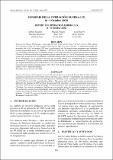Por favor, use este identificador para citar o enlazar este ítem:
https://hdl.handle.net/20.500.12958/3561Registro completo de metadatos
| Campo DC | Valor | Lengua/Idioma |
|---|---|---|
| dc.contributor.author | Bouchon Corrales, Marilú | - |
| dc.contributor.author | Ñiquen Carranza, Miguel | - |
| dc.contributor.author | Pizarro, Luis | - |
| dc.contributor.author | Gutiérrez Torero, Mariano | - |
| dc.contributor.author | Mori, Julio | - |
| dc.contributor.author | Buitrón Díaz, Betsy | - |
| dc.contributor.author | Ayón Dejo, Patricia | - |
| dc.contributor.author | Peña Tercero, Cecilia | - |
| dc.contributor.author | Díaz Acuña, Erich | - |
| dc.date.accessioned | 2021-07-12T21:08:41Z | - |
| dc.date.available | 2021-07-12T21:08:41Z | - |
| dc.date.issued | 2021-06 | - |
| dc.identifier.citation | Inf Inst Mar Perú 48(2), 2021, p. 298-302 | es_ES |
| dc.identifier.issn | 03787702 | - |
| dc.identifier.uri | https://hdl.handle.net/20.500.12958/3561 | - |
| dc.description.abstract | La Operación Eureka LIX se realizó del 6 al 8 de octubre 2002 con la participación de 24 embarcaciones pesqueras que cubrieron el área comprendida entre 5°S (Talara) y 14°S (Pisco) hasta las 150 millas náuticas de distancia a la costa. Los resultados indicaron que el ambiente marino se encontró alterado por la presencia de AES al norte de Chicama y ASS cerca de la costa generando grandes zonas de mezcla. Las ACF mostraron menor cobertura a pesar que se encontraron temperaturas normales a frías para la época al sur de Chimbote. La distribución de la temperatura en la superficie del mar fue irregular debido a la inestabilidad de las condiciones atmosféricas. El recurso anchoveta mostró distribución restringida latitudinalmente al grado 9°S, mientras que longitudinalmente presentó dos núcleos, uno dentro de las 10 millas, y otro a 80 millas de la costa. La estructura por tamaños presentó rango entre 12,5 y 17,5 cm de longitud total, moda principal en 13,5 cm, siendo el 100% ejemplares adultos. | es_ES |
| dc.description.abstract | ABSTRAC: - From October 6 to 8, 2002, Operation Eureka LIX was carried out with the participation of 24 fishing vessels covering the area between 5°S (Talara) and 14°S (Pisco) up to 150 nautical miles offshore. The results indicated that the marine environment was altered by the presence of SEW north of Chicama and SSW nearshore, which generated large mixing zones. The CCW showed less coverage although we found normal to cold temperatures for the season south of Chimbote. Sea surface temperature distribution was irregular given the unstable atmospheric conditions. The anchoveta resource had a latitudinally restricted distribution (9°S) while longitudinally it showed two nuclei, one within 10 miles and the other one at 80 miles offshore, respectively. The size structure varied between 12.5 and 17.5 cm in total length, the main mode was 13.5 cm, with 100% adult specimens. | - |
| dc.language.iso | spa | es_ES |
| dc.publisher | Instituto del Mar del Perú | es_ES |
| dc.relation.ispartofseries | Informe Imarpe;48(2), 2021 | - |
| dc.rights | info:eu-repo/semantics/openAccess | es_ES |
| dc.rights.uri | https://creativecommons.org/licenses/by/4.0/ | es_ES |
| dc.source | Instituto del Mar del Perú - IMARPE | es_ES |
| dc.source.uri | Repositorio Digital IMARPE | es_ES |
| dc.subject | Recursos Marinos | es_ES |
| dc.subject | Anchoveta peruana | es_ES |
| dc.subject | Cruceros de investigación | es_ES |
| dc.subject | Eurekas | es_ES |
| dc.title | Informe de la Operación Eureka LIX (6-8 de octubre 2002) | es_ES |
| dc.title.alternative | Report on Operation Eureka LIX (6-8 October 2002) | es_ES |
| dc.type | info:eu-repo/semantics/article | es_ES |
| dc.publisher.country | Perú | es_ES |
| dc.subject.ocde | http://purl.org/pe-repo/ocde/ford#1.06.12 | es_ES |
| Aparece en las colecciones: | Informe vol. 48(2) 2021 | |
Ficheros en este ítem:
| Fichero | Descripción | Tamaño | Formato | |
|---|---|---|---|---|
| Informe 48-2 artículo11.pdf | 2,11 MB | Adobe PDF |  Visualizar/Abrir |
Este ítem está sujeto a una licencia Creative Commons Licencia Creative Commons

